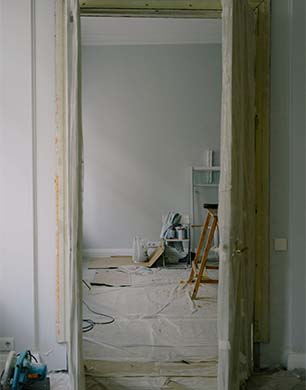
Photo Credit: Ksenia Chernaya via www.pexels.com
The initial outbreak of Covid-19 saw a sharp increase in DIY sales, as the world was put into lockdown, and many people were in dire need of a new hobby. However, as life has slowly been getting back to normal, it’s likely that many DIY projects have been abandoned. We have now passed the winter solstice so from now on the weather is only likely to get better, and the days are becoming longer as they pass. So now is the perfect time to get your DIY up and running again. However, as many as 70 people per year lose their life because of DIY-related accidents. Often, many people lack the correct knowledge on how to safely work at home. Although you don’t need to undergo any specific training (as seen in the workplace), it is important to familiarise yourself with how to avoid accidents. Here are our top tips.
Ladders
Most deaths caused by DIY accidents are directly linked the use of a ladder. Therefore, it is crucial that your ladder is in good working condition, and you know how to correctly use it. Many people are irresponsible with ladders and take risks to complete a job quicker – however, this is when trips and falls will happen. When administering a ladder, ensure you place it on a clean, smooth, non-slip surface and when deciding where to place it, follow the four-to-one rule. This means for every four feet, move the base one foot away from the wall. Once you’re ready to climb, ensure your space is clear and perhaps enlist the help of a friend to spot you. When climbing, always maintain three points of contact, so either one foot and two hands or two feet and one hand. Take your time and remain aware of your surroundings.
Tools and equipment
If you come across a tool you haven’t used before, you may think you can go ahead and freestyle it. However, this is a rookie error and people even have accidents with tools they have used for years – every year, 3500 people are hurt using a screwdriver. Make sure you take the time to read the manual if using a new tool and take your time before using it. If you are using a power tool or machine, ensure you unplug your drill before fitting parts, avoid wearing jewellery or clothes which may get caught in machines, and keep away tools from damp places. If you feel as if the task at home is too strenuous, you have not failed your DIY project if you enlist the help of a professional.
Dress for the part
Another key part of preventing or mitigating accidents is by wearing the correct clothes and personal protective equipment. Ensure your eyes are shielded by wearing googles or glasses when undergoing work which may interfere with your eyes. Wear tight-fitting clothing which won’t get in the way of your work – anything with fire retardant qualities is a huge plus! Finally, wear a mask or face shield when sanding or working on woodwork.
By following these tips, you are sure to reduce your chances of having an accident. However, sometimes we simply cannot avoid them. If you are unfortunately involved in an accident and feel as if it was not your fault, do not hesitate to seek out some help should you need it.

